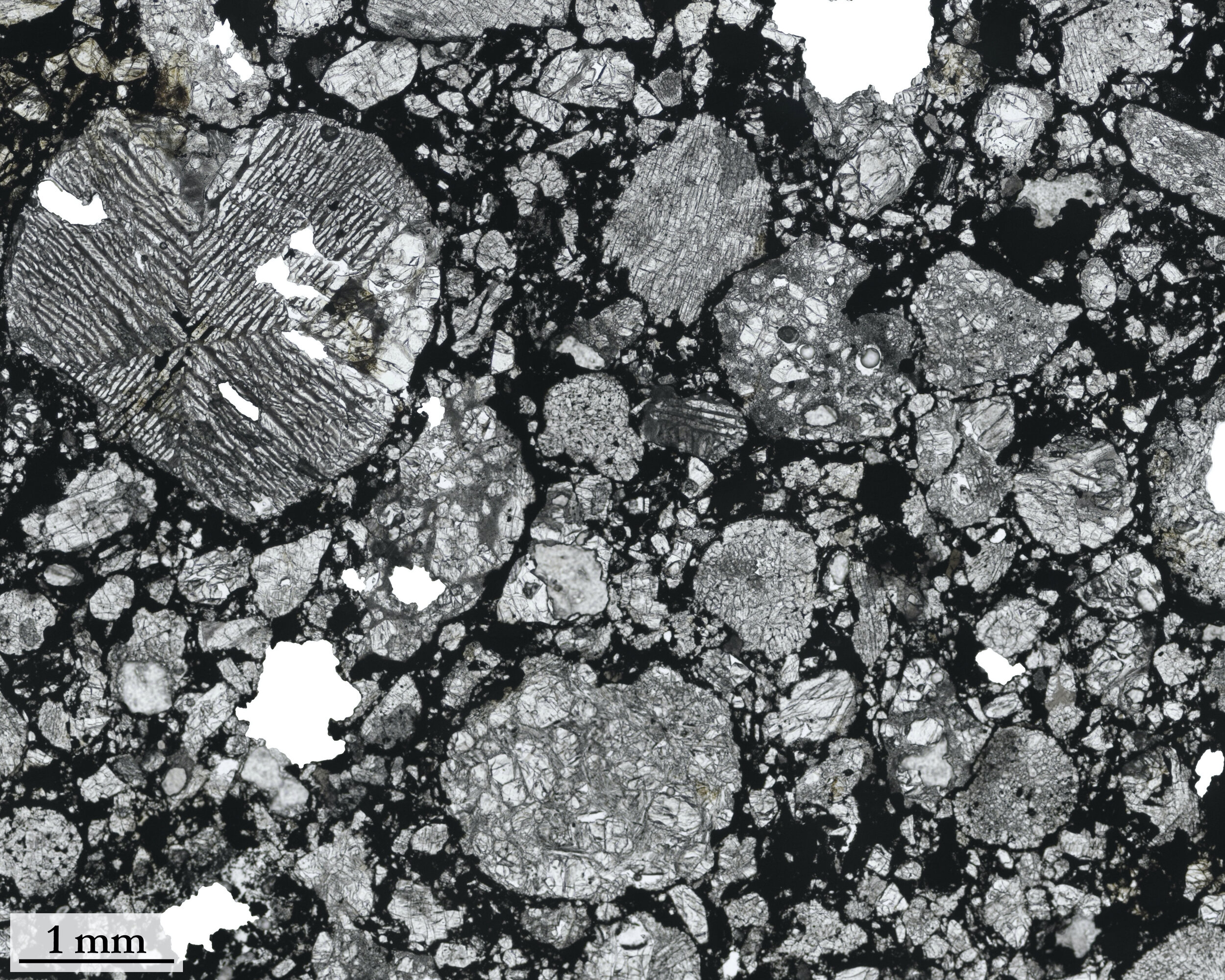
Bishunpur: ordinary (LL) chondrite
A thin section of the Bishunpur ordinary chondrite. It is made almost entirely of chondrules. Chondrules are a major constituent of asteroids, and by extension are a major building block of planets.
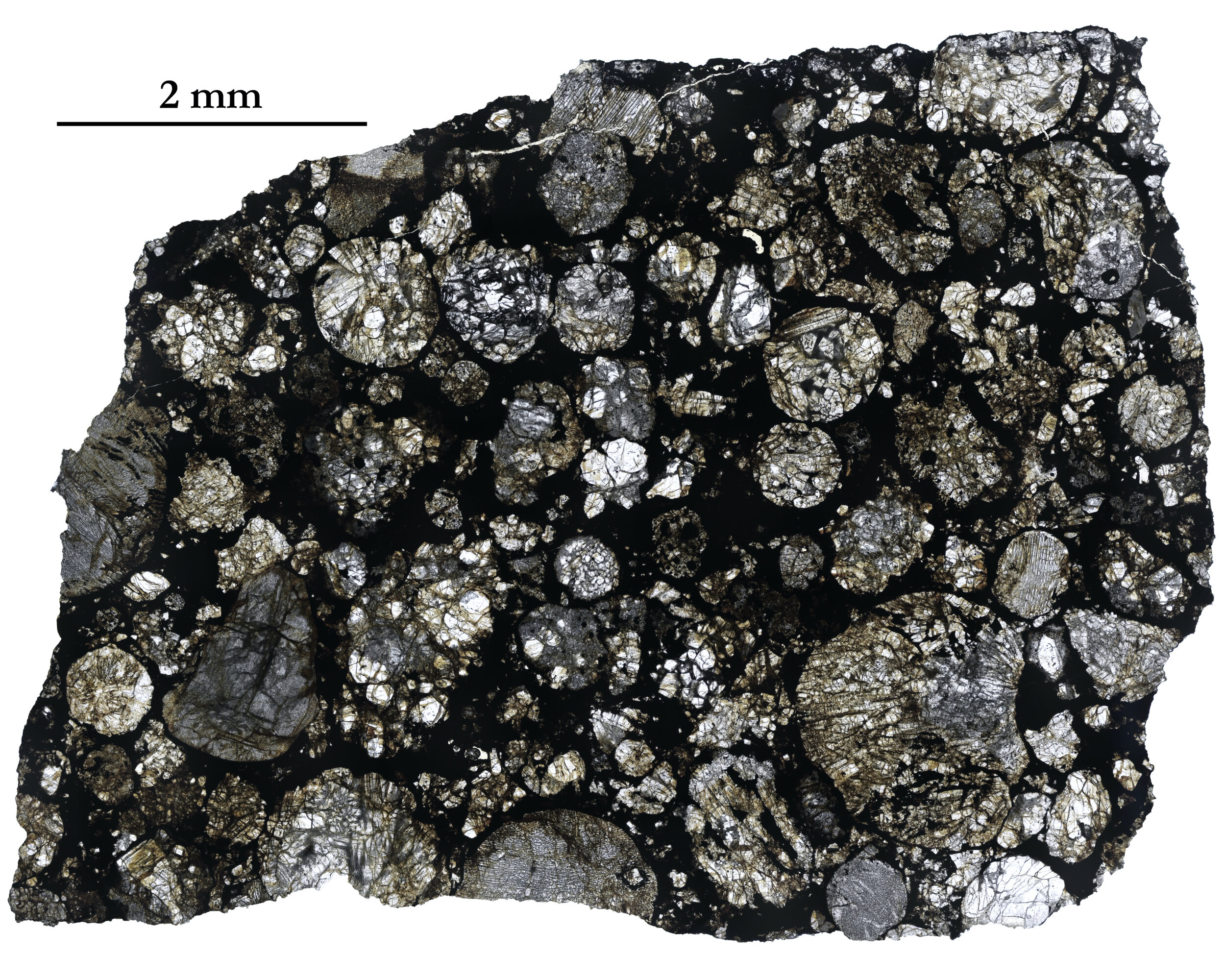
Kyrmka: ordinary (LL) chondrite
A thin section of the Kyrmka ordinary chondrite. It is made almost entirely of chondrules. Chondrules are a major constituent of asteroids, and by extension are a major building block of planets.
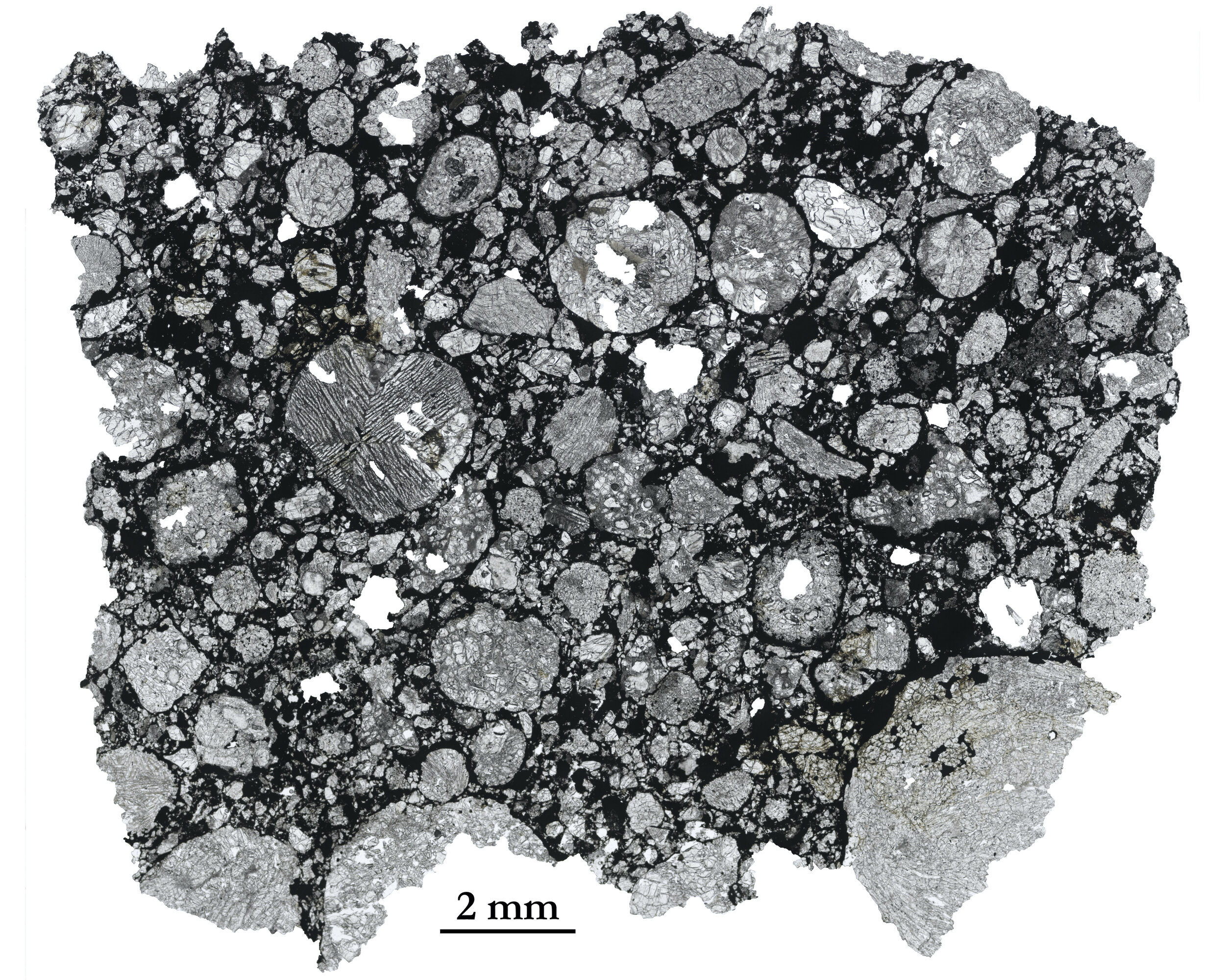
Bishunpur: ordinary (LL) chondrite
A thin section of the Bishunpur ordinary chondrite. It is made almost entirely of rounded spherical chondrules. Chondrules are a major constituent of asteroids, and by extension are a major building block of planets.
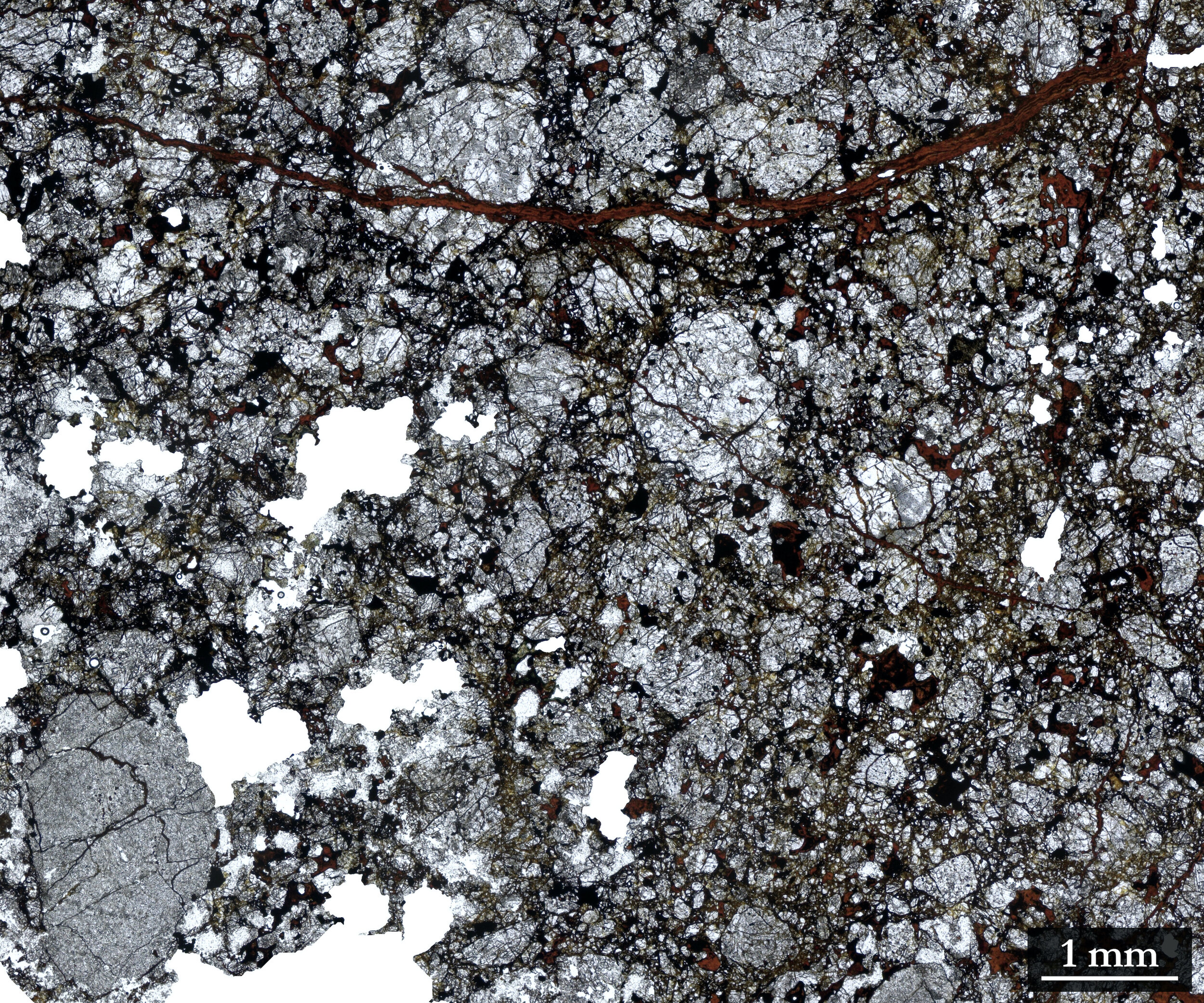
Farley: ordinary (H) chondrite
A thin section of the Farley ordinary chondrite. It is made almost entirely of rounded spherical chondrules, but they have been metamorphosed (heated) almost beyond recognition by intense heat on its parental asteroid.
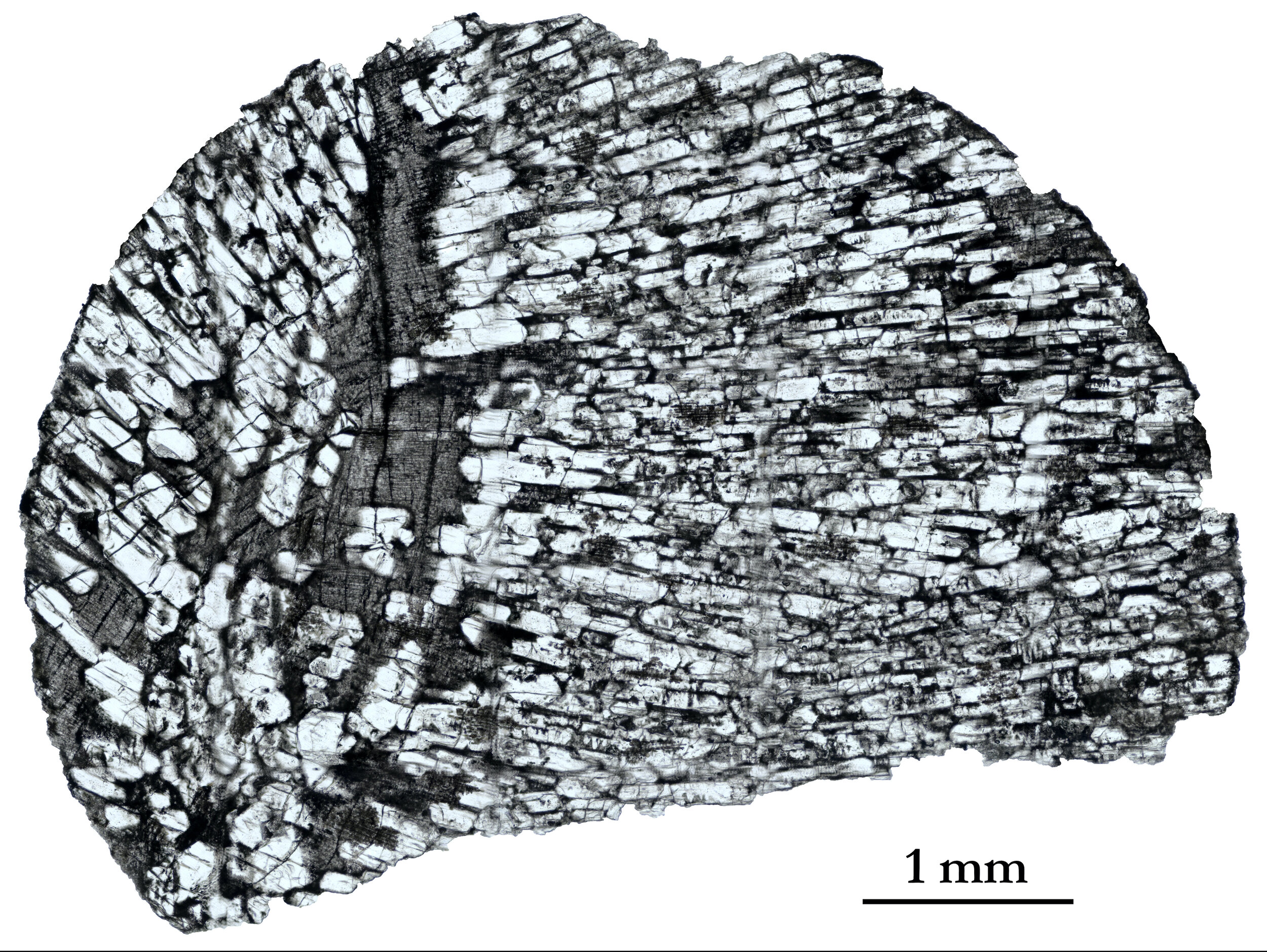
Chondrule in Allende (carbonaceous (CV) chondrite)
A barred olivine chondrule from the Allende meteorite. Chondrules are poppy seed-sized spheres that cooled and crystallised from once-molten droplets of molten rock. They are a major dusty building block of asteroids, comets, and planets. They are some of the oldest rocks in the Solar System, and exactly how they formed is a mystery.
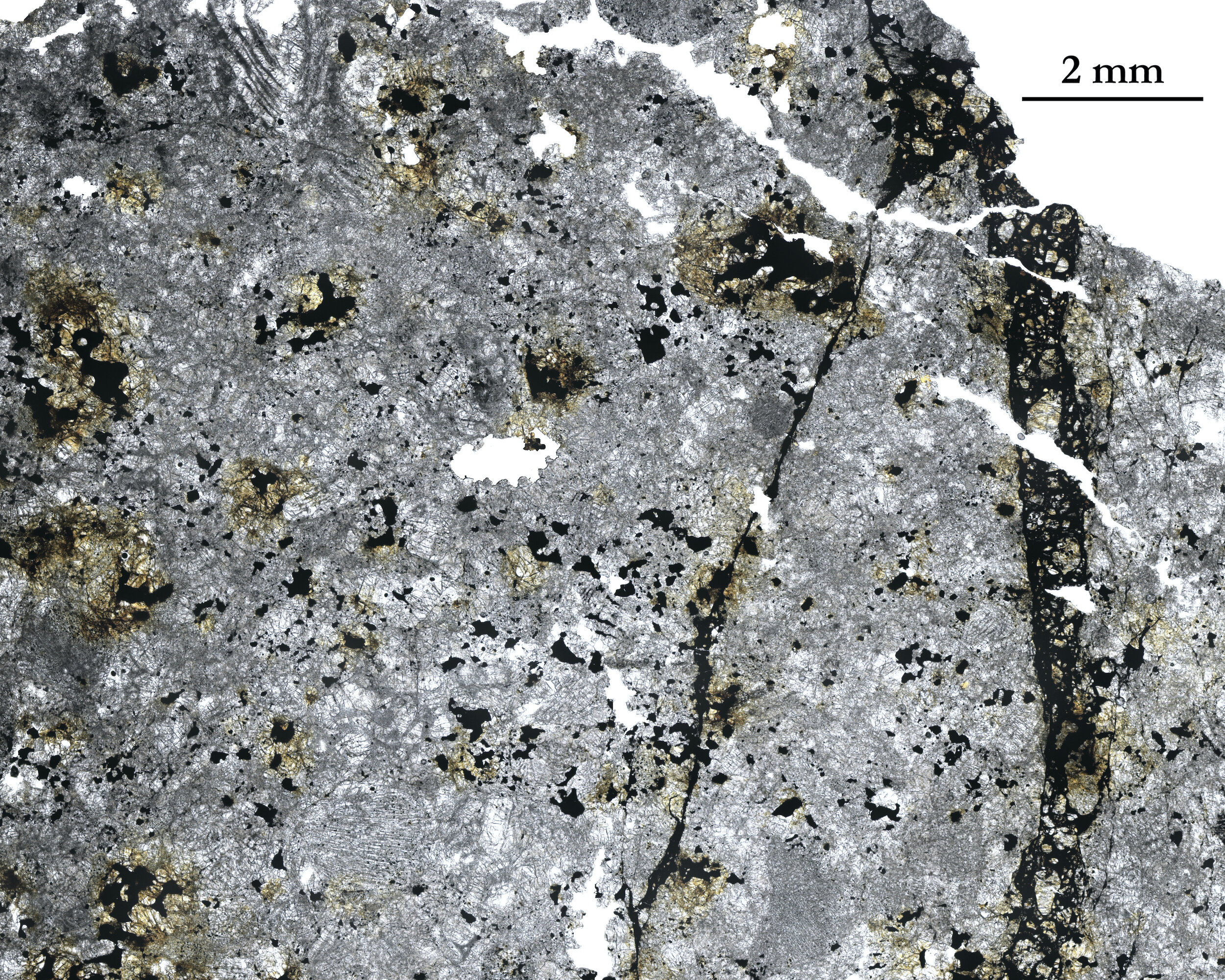
Wold Cottage: ordinary (LL) chondrite
A thin section of the Wold Cottage ordinary chondrite. This meteorite has been metamorphosed (heated) almost beyond recognition by intense heat on its parental asteroid. It fell in the East Riding of Yorkshire in 1795 and played a pivotal role in the inception of meteorite science.
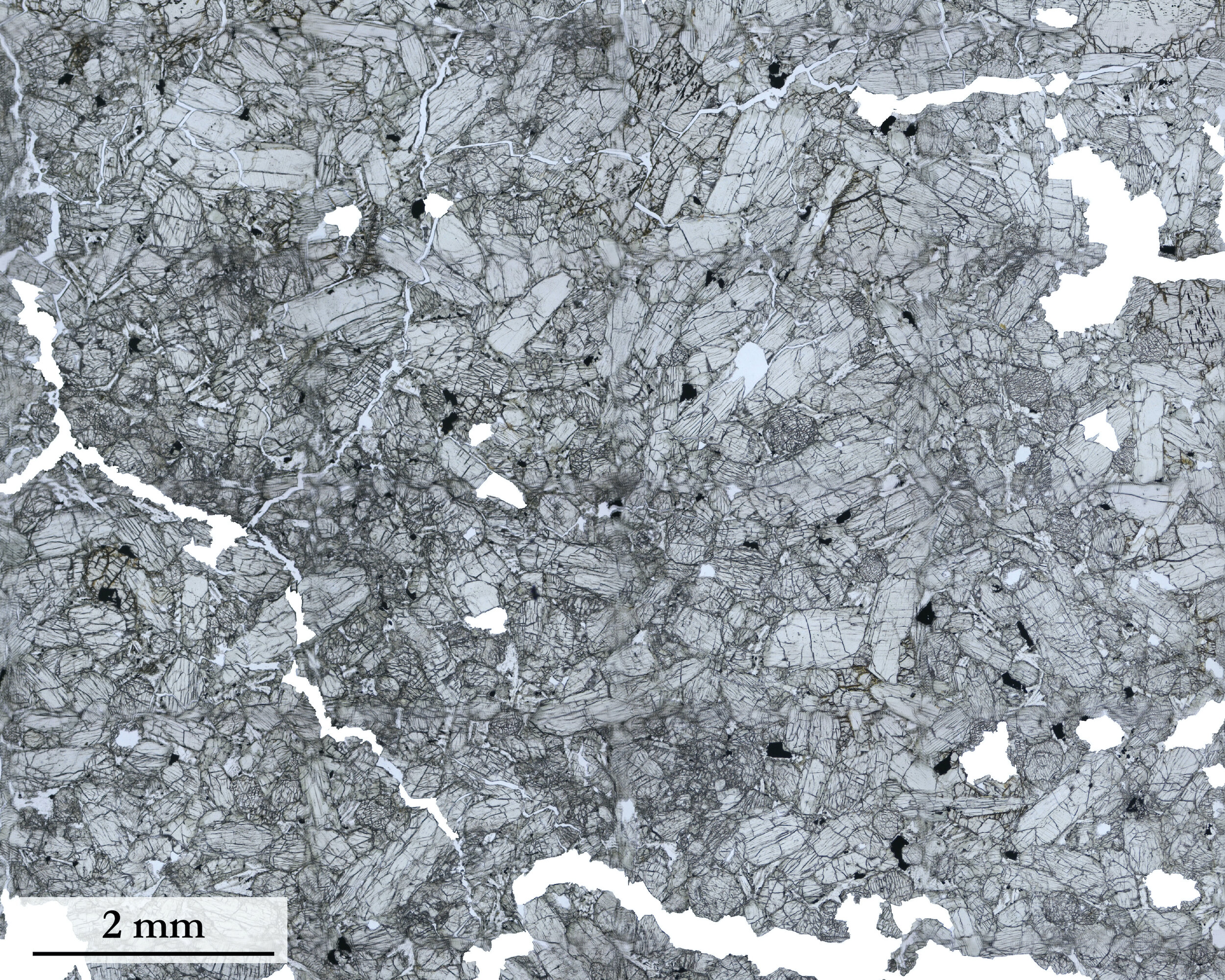
Nakhla: Martian meteorite (nakhlite)
Nakhlites, along with the shergottites and chassignites, come from Mars. They are pieces of the Martian surface that arrive here on Earth as meteorites.
Nakhlites formed deep within a magma chamber beneath the Martian surface, and cooled and crystallised to form solid igneous rock.
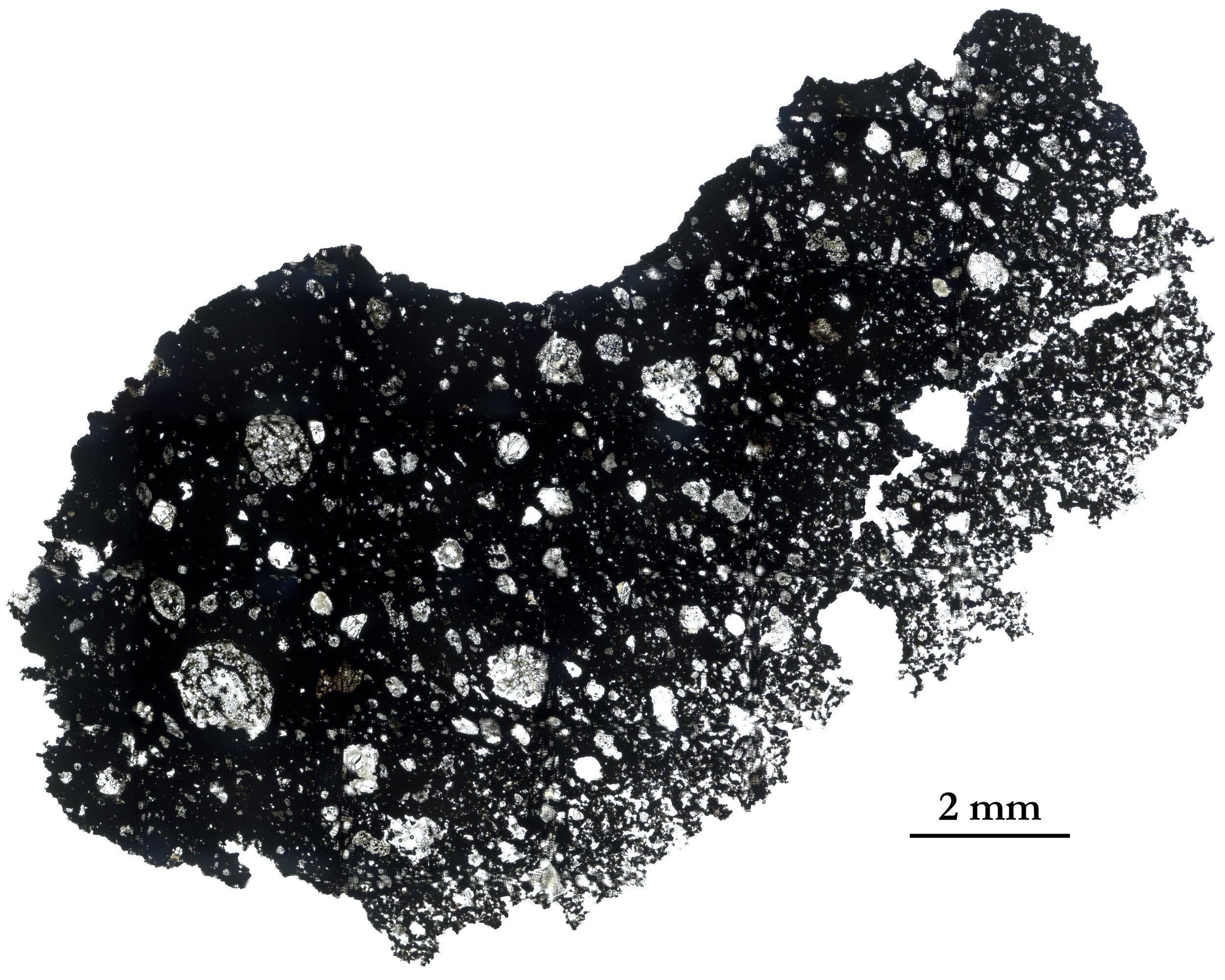
Murchison: carbonaceous (CM) chondrite
A thin section of the Murchison carbonaceous chondrite. It is made from motes of dust that coalesced to form asteroids, comets, and planets some 4.6-billion-years ago, but most of it has been destroyed by the action of water.
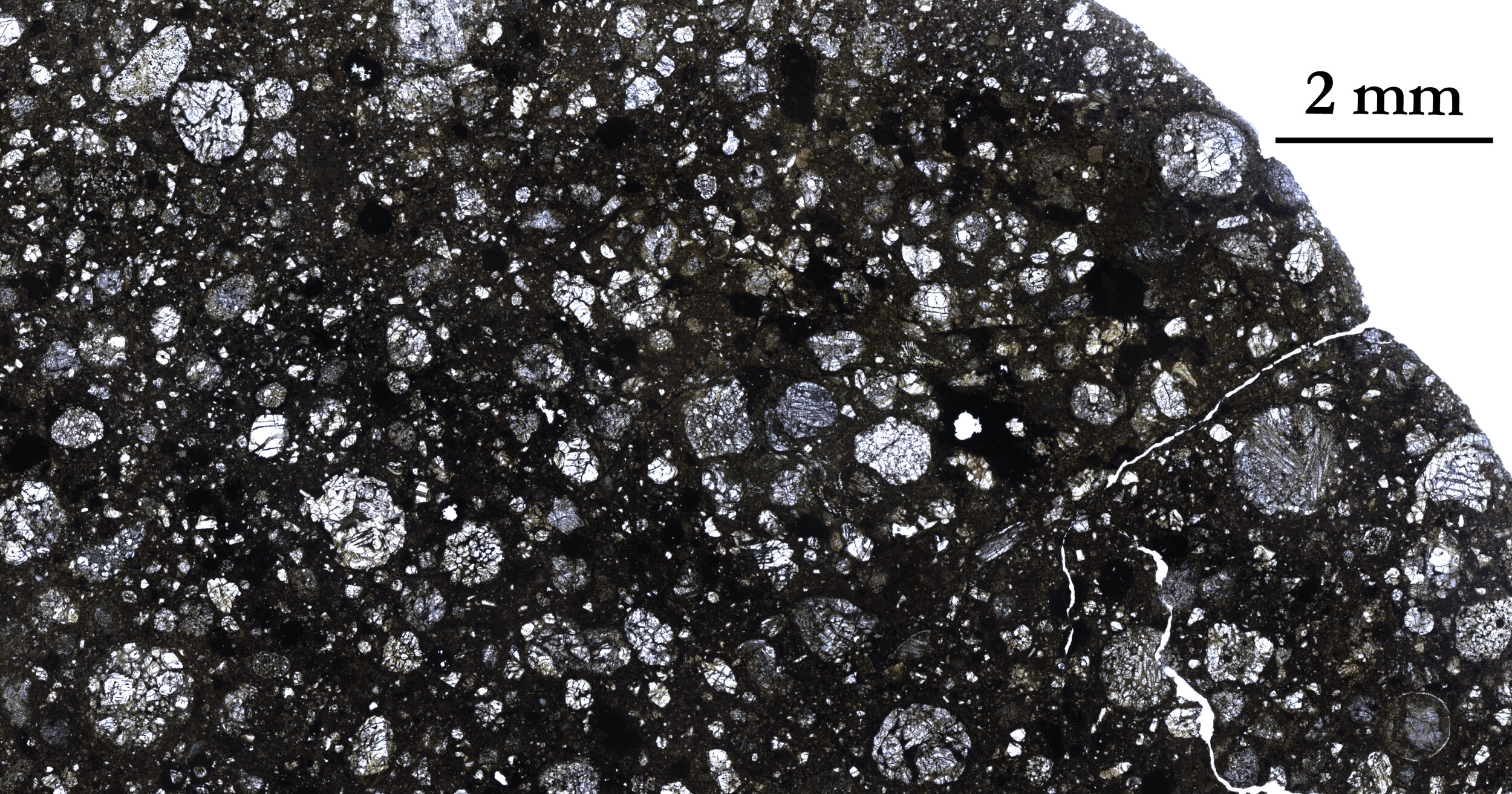
Northwest Africa 801: carbonaceous (CR) chondrite
A thin section of the Northwest Africa 801 carbonaceous chondrite. It is made from motes of dust that coalesced to form asteroids, comets, and planets some 4.6-billion-years ago.
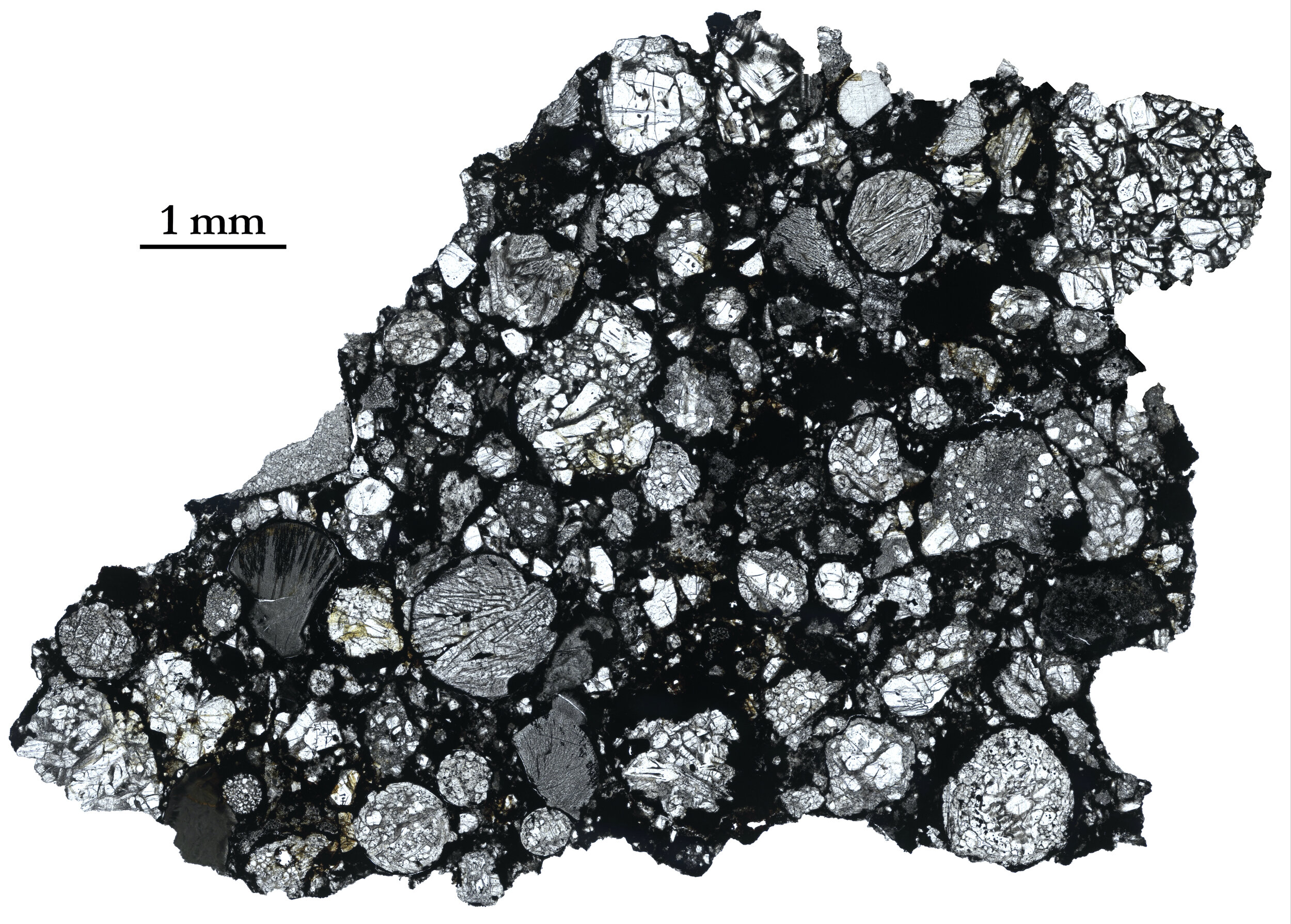
Chainpur: ordinary (L) chondrite
A thin section of the Chainpur ordinary chondrite. It is made almost entirely of rounded spherical chondrules. Chondrules are a major constituent of asteroids, and by extension are a major building block of planets.
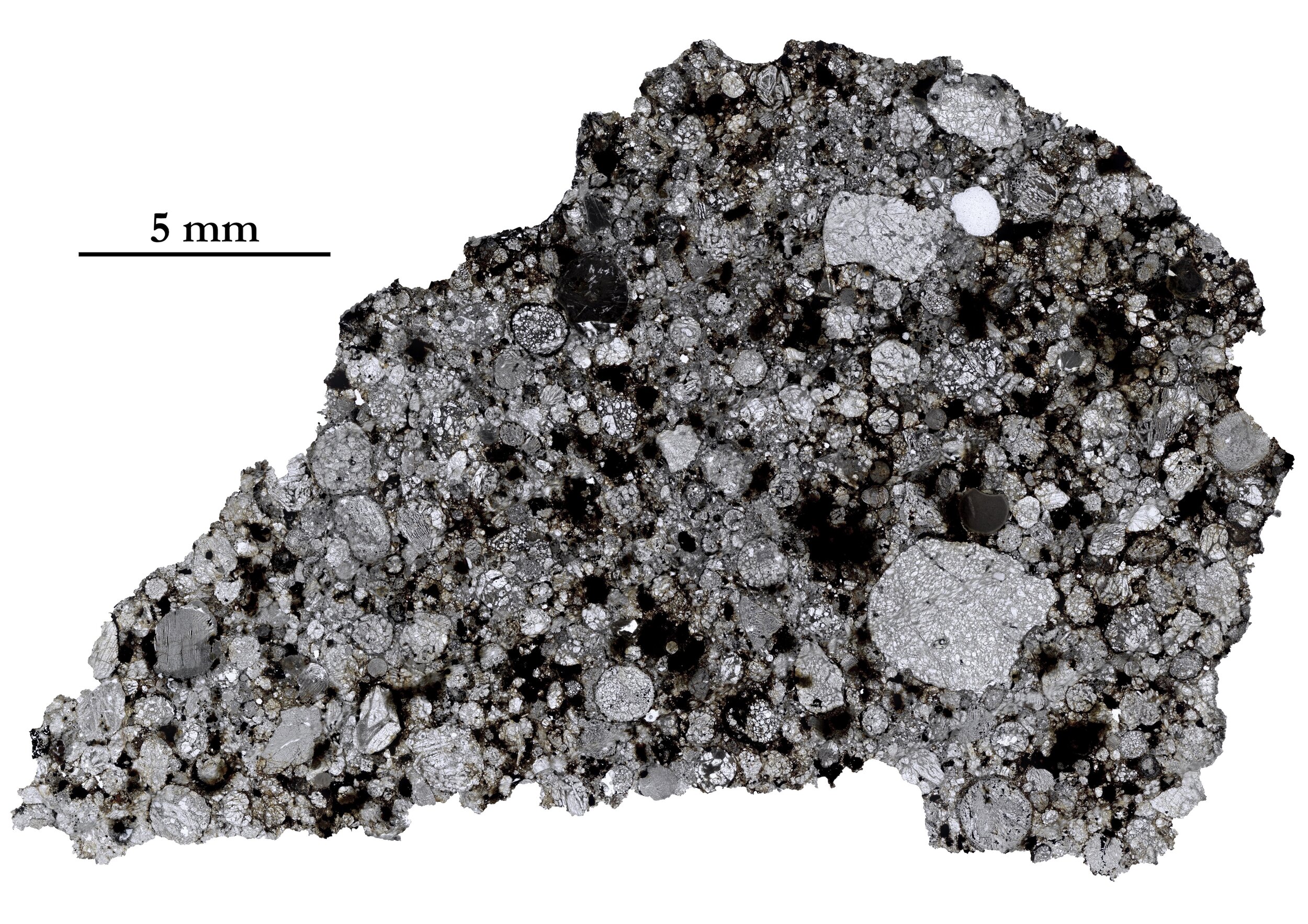
Ceniseros: ordinary (L) chondrite
A thin section of the Ceniseros ordinary chondrite. It is made almost entirely of rounded spherical chondrules. Chondrules are a major constituent of asteroids, and by extension are a major building block of planets.
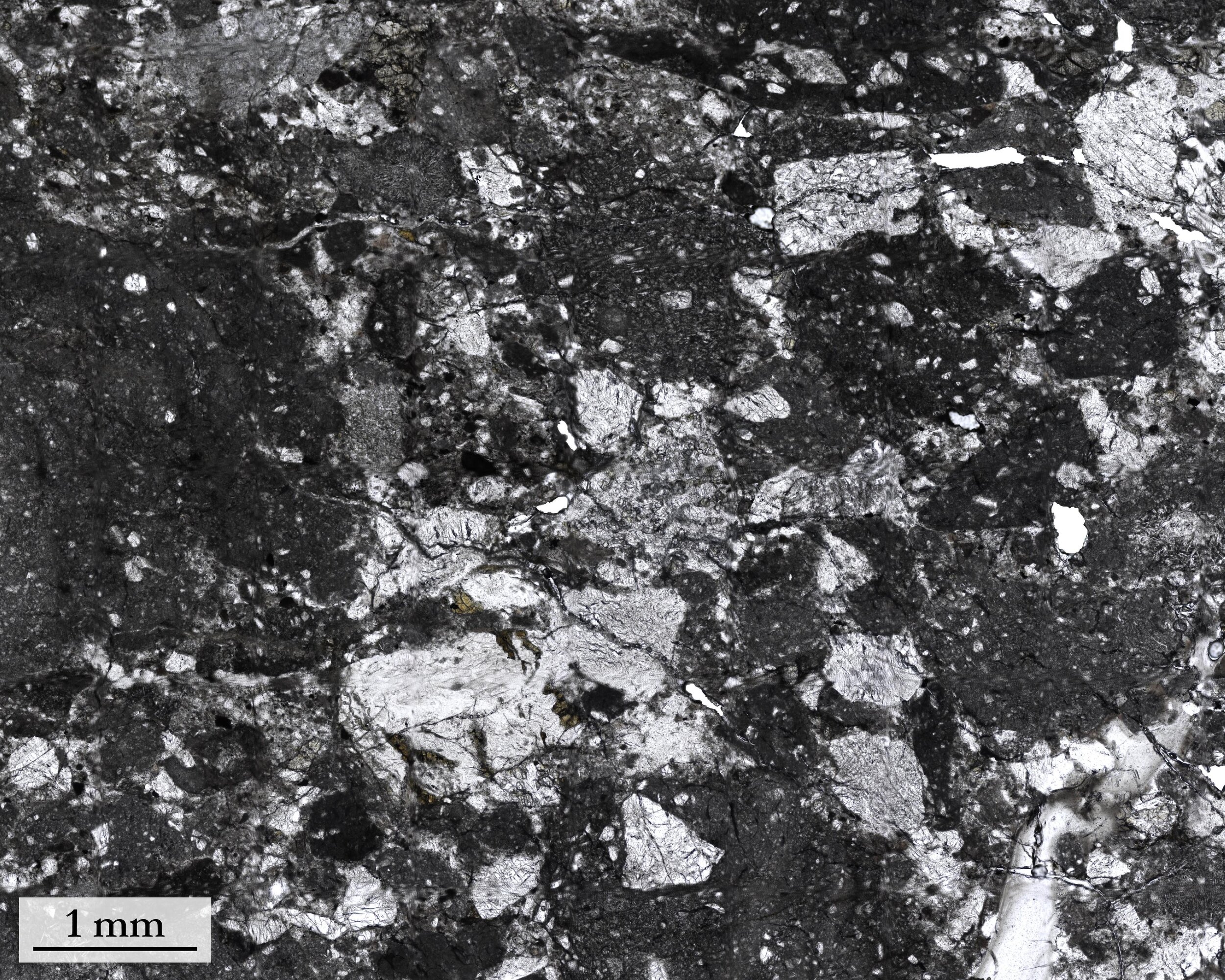
Dar al Gani 400: Lunar meteorite
Sometimes, pieces of the Moon are blasted from its surface by high-energy impacts, and some of those pieces end up falling to Earth as meteorites.












